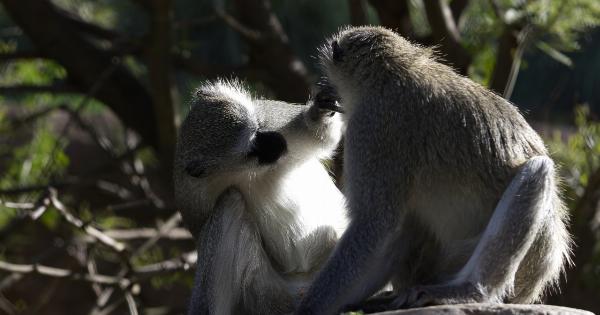Dolphins are known for their intelligent and playful nature. While they are recognized worldwide for their animated performances and the fun fact that they are virtually criminals of the ocean to fishermen, not a lot of people know much about them.
Here are 20 interesting facts about dolphins and some tips on how to keep them safe in their natural habitat.
Facts About Dolphins
1. Dolphins are mammals
Dolphins are warm-blooded mammals, just like humans. They nurse their young, and they breathe air through a blowhole on the tops of their heads.
2. There are 40 different species of dolphins
There are 40 different species of dolphins known to exist today. They all have different characteristics, such as size, coloring, and habitat.
3. Dolphins have unique “names” for each other
Dolphins are known to use unique whistles and clicks to communicate with each other, much like human language. Each dolphin has a unique whistle that identifies them to the others in their pod.
4. They are fast swimmers
Dolphins are incredibly fast swimmers and can reach speeds of up to 60 km per hour.
5. They are extremely intelligent animals
Dolphins have a larger brain than most other animals on the planet, surpassing even humans in certain areas. They are known to be intuitive, gentle, and compassionate.
Scientists have also discovered that they have the ability to recognize themselves in a mirror, which is a level of self-awareness that is rarely found outside of humans.
6. Dolphins have a long lifespan
Dolphins can live for more than 60 years and may even outlive humans in some areas.
7. Dolphins cultivate friendships
Dolphins tend to cultivate strong friendships, much like humans. They have been observed staying with injured or sick dolphins and helping them to the surface to breathe.
8. Dolphins use tools
Dolphins have been known to use tools in the wild, such as using sponge to protect their nose as they forage for food in rocky areas, and stingray as weapon to stun fish.
9. They have excellent vision
Dolphins have exceptional eyesight both above and below the water surface. They also have a special visual system called “echolocation,” which allows them to spot objects even in murky waters.
10. They can sleep with one eye open
Dolphins can sleep with only one half of their brain at a time, which allows them to continue swimming and breathing while the other half of their brain rests. During this time, one eye is open, and the other is closed.
11. Dolphins are not fish
While they might look like fish, dolphins are actually mammals belonging to the order Cetacea, just like whales and porpoises.
12. Dolphins eat a lot of fish
Dolphins predominantly feed on fish, squids, and similar aquatic creatures.
13. They are social animals
Dolphins are social creatures and live in groups called “pods” that can range from just a few individuals to 1,000 dolphins or more.
14. They have a unique hunting technique
Dolphins can use a method called “fish corralling” to trap schools of fish. They use echolocation to round up the fish into a tight ball, which is then attacked by the entire pod.
15. Dolphins are constantly shedding and regrowing teeth
Dolphins have between 100-120 teeth in their mouths. They lose and regrow teeth throughout their lifespan, with each tooth able to grow up to 5 times!.
16. They have a diverse range of vocalizations
Dolphins use a wide variety of sounds to communicate with each other, including whistles, clicks, and body language. They can even make “signature whistles” to introduce themselves to other dolphins, like name tags.
17. Dolphins are vulnerable to human activities
Due to factors such as pollution, fishing nets, and hunting, many species of dolphins are declining rapidly, with some on the verge of extinction.
18. Dolphins have a hard time in captivity
Dolphins are social creatures and require interaction and mental stimulation to thrive. They can become depressed, despondent and even aggressive when kept in captivity or stagnant environments like zoos or aquariums.
19. They are protected by laws
Dolphins are protected under various laws, such as the Marine Mammal Protection Act in the United States and the Dolphins Protection Act of 2006 in India, ensuring that they are safe in their natural habitats.
20. Anyone can adopt and protect a dolphin
There are several non-profit organizations dedicated to protecting dolphins worldwide, and many offer the opportunity to “adopt a dolphin”. These donations go towards funding research and conservation efforts for the species.
How to Keep Dolphins Safe
1. Keep the oceans clean
Pollution is one of the most significant threats to dolphins. Discarded plastic and trash from fishing resources can harm and kill dolphins, contaminating their food and habitats.
To help keep the oceans clean, reduce litter, recycle, and dispose of waste properly.
2. Respect their natural habitat
When boating or swimming in areas where dolphins are known to live, be respectful of their natural habitat and keep a safe distance. Do not chase after them or get too close as it can cause a disturbance in their social structure.
3. Support laws that protect dolphins
Support the laws established to protect dolphins and their habitats, and advocate for stricter legislation.
By voting or lobbying in support of such measures, you contribute to giving the animals a fighting chance against human activity that pose a threat to their survival.
4. Report dolphin mistreatment
If you witness instances of disregard, exploitation, or mistreatment, report the incidence to your local conservation authority.
The public has an essential role to play in identifying and reporting such activities that can help authorities get the evidence needed to crack down on offenders.
5. Don’t buy dolphin souvenirs
Many souvenir shops sell items carved from dolphin teeth and bone, but these products come from the killing of dolphins.
By refusing to purchase these items, you help put an end to the senseless killing of these animals that are already at risk due to human behavior, such as overfishing and pollution.
Conclusion
Dolphins are fascinating animals that are crucial to the balance of the world’s oceans. As they continue to face threats, keeping them safe and protected should be a top priority.
By being mindful of our actions and supporting laws and initiatives that protect the welfare of dolphins, we can ensure that these creatures continue to thrive for future generations.






























